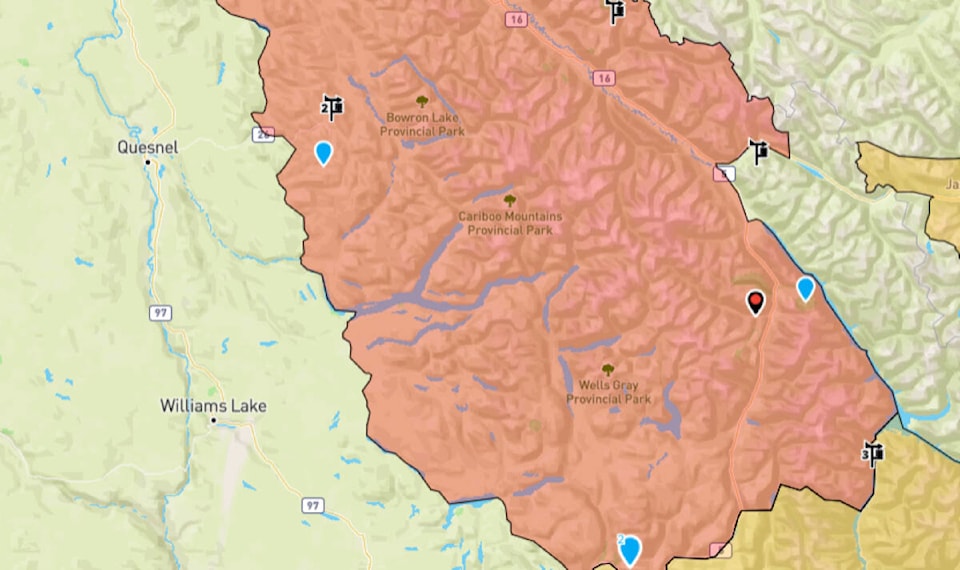Backcountry users are warned to take care when heading into the mountains, in the wake of an increased avalanche risk across the province.
Prince George Search and Rescue member Dave Merritt, an avalanche rescue expert with 32 years of experience, said he expects to be dealing with avalanche risks for most of the winter due to recent snowstorms and a “grumpy” snowpack. He was in 100 Mile House Feb. 4-5 to run an avalanche rescue course and said the avalanche risk is higher than usual in most parts of the province.
It is also listed as high in both Wells Grey Provincial Park and Cariboo Mountains Provincial Park near the treeline, which means natural and human-caused avalanches are likely.
“We just got a huge amount of snow and people are going to want to go out and play in it but you know, give it a day or two to set up and heal up first,” Merritt said last week. “This isn’t going to be like the last couple of years where skiers and snowmobilers can hit just about anything. This year we need to get our heads on a swivel, be aware of what we’re doing and make smart decisions.”
Three people have already died in avalanches in B.C. this year. Merritt said conditions for avalanche risk can be monitored using the Avalanche Canada Website and App. This year Avalanche Canada has switched to a “flexible forecasting model” based on avalanche risk, rather than the region. That means that the Cariboo and North Rockies are now combined if the hazard level is the same.
“We have a scale with low, moderate, considerable, high and extreme. A low rating is there is still a possibility something could happen, moderate risk is natural avalanches are unlikely but human-caused avalanches are possible,” Merritt said. “’Considerable’ means natural avalanches are possible and human avalanches are likely. Most fatal avalanches in the province happen at a considerable rating (or higher).”
Even if the risk is moderate or low, Merritt said there are still little terrain traps, like gullies, that could amplify the burial depth of a potential avalanche. Riders who do head out are asked to update the Mountain Information Network about the conditions they see.
“I see our weak layer staying around a little bit longer and I think we’re going to have some concerns with our deep slabs and our persistent slabs,” Merritt said. “How they’re going to react I don’t know for the short term but I think in the long term when we get heavier spring snow it’s going to become reactive again.”
patrick.davies@100milefreepress.net
Like us on Facebook and follow us on Twitter.
